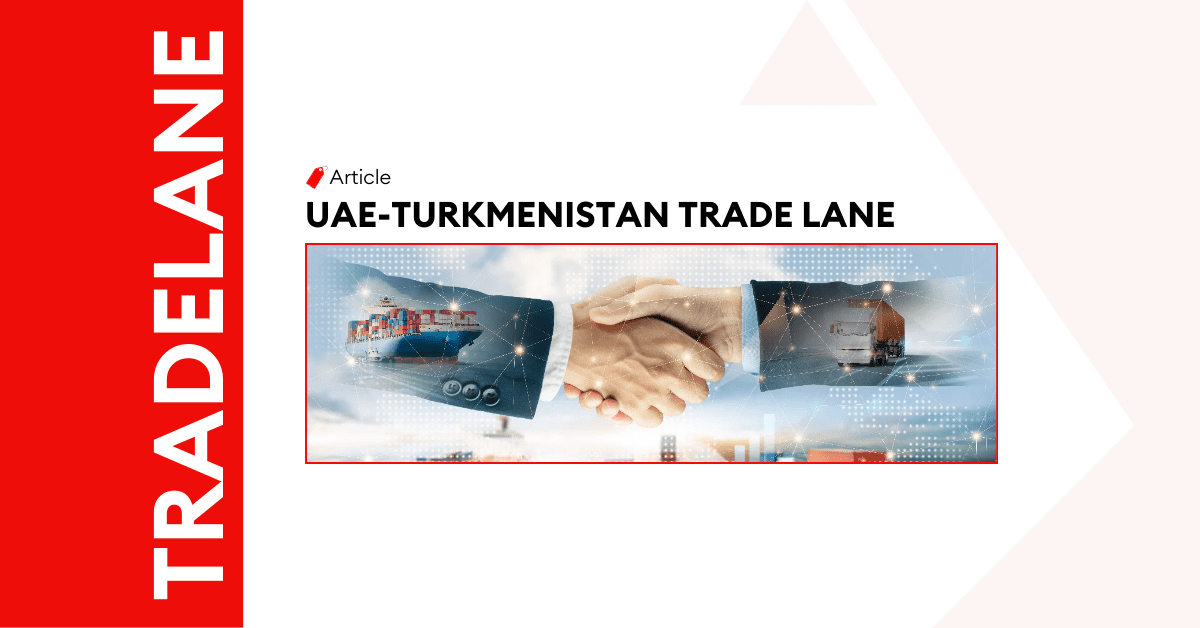
Essential Insights into the UAE-Turkmenistan Trade Lane
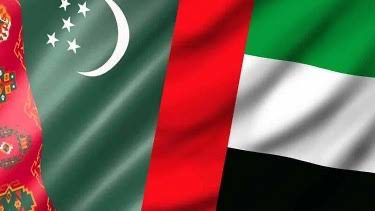
Introduction
The trade relationship between the UAE and Turkmenistan is increasingly becoming a cornerstone of economic cooperation in the region. Both nations have recognized the strategic value of bolstering bilateral trade to drive economic development and diversification.
The strategic significance of this trade lane cannot be overstated. It strengthens economic ties and fosters cultural exchange and political cooperation between the UAE and Turkmenistan. The synergy created by this relationship is expected to pave the way for sustainable growth and stability in the region, making this trade lane a vital component of their respective economic strategies.
Key Economic Insights: UAE and Turkmenistan
Exploring the UAE Economy
Key Economic Drivers in the UAE
Currently, the UAE’s economy is projected to grow due to significant contributions from both oil and non-oil sectors. The non-oil GDP growth is particularly notable, expected to rise by 4.5% as the nation continues to diversify its economic base away from hydrocarbons.
The UAE’s economic landscape is supported by several key industries:
- Oil and Gas: Although the UAE is diversifying, oil and gas remain critical to the nation’s GDP.
- Tourism: Tourism continues to thrive, with cities like Dubai and Abu Dhabi attracting millions of visitors annually, boosting the hospitality and retail sectors.
- Aviation: The UAE is a global aviation hub, home to major airlines like Emirates and Etihad, facilitating international travel and trade.
- Logistics: Advanced logistics infrastructure, including state-of-the-art ports and free zones, positions the UAE as a critical link in global supply chains.
Top Goods Powering UAE's Global Trade
The UAE’s top exports include crude oil, refined petroleum products, aluminum, and natural gas. The country also exports a significant amount of gold, jewelry, and electronic equipment.

Primary Economic Partners of the UAE
The UAE maintains robust trade relations globally, with key trading partners including China, India, the United States, and European Union countries.
Insights into Turkmenistan’s Economy
Turkmenistan’s Economic Landscape
Turkmenistan’s GDP is expected to rise by 7.0% in 2024. The country benefits significantly from its vast natural gas reserves, which are a major driver of economic activity and exports. The non-hydrocarbon sector is also gaining momentum, supported by government spending and infrastructure projects aimed at diversifying the economy.
Why Invest in Turkmenistan?
Strategic Location and Connectivity
Turkmenistan is strategically located in Central Asia, serving as a vital link between Europe and Asia. This geographical advantage provides investors with access to major markets across both continents. The country is part of significant regional infrastructure projects like the Belt and Road Initiative (BRI), which further enhances its connectivity. Turkmenistan’s well-developed transport network, including pipelines, railways, and highways, makes it an ideal hub for businesses looking to expand their operations across the region.
Abundant Natural Resources
Turkmenistan is rich in natural resources, particularly in natural gas, oil, and minerals. The country holds the fourth-largest reserves of natural gas in the world, making it a key player in global energy markets. The government has prioritized the development of its energy sector, attracting foreign investment through favorable policies and long-term contracts. Additionally, Turkmenistan’s vast agricultural potential and untapped mineral resources offer lucrative opportunities for investors in these sectors.
Stable Economic Environment
Turkmenistan boasts a stable economic and political environment, which is conducive to long-term investments. The government has implemented a series of reforms aimed at improving the business climate, including tax incentives, streamlined business registration processes, and the establishment of Free Economic Zones (FEZs). These initiatives are designed to attract Foreign Direct Investment (FDI) and promote economic diversification.
Government Support and Investment Incentives
The Turkmen government is committed to creating a favorable investment climate. It offers a range of incentives for foreign investors, including tax exemptions, customs duty reductions, and preferential treatment in certain sectors. The government’s focus on infrastructure development, agriculture, energy, and industry provides numerous opportunities for investors looking to enter these growing markets.
Overview of Trade Relations Between UAE and Turkmenistan
Top Sectors Driving UAE-Turkmenistan Trade
The trade relationship between the UAE and Turkmenistan has been flourishing, marked by significant growth and mutual economic benefits. In 2023, the trade turnover between the two nations surged to over $650 million in the first nine months alone.
Several key industries drive the trade activities between the UAE and Turkmenistan:
- Energy: Turkmenistan’s vast reserves of natural gas and oil are major exports to the UAE.
- Construction and Infrastructure: UAE investments focus on infrastructure projects, leveraging Turkmenistan’s need for modern development.
- Textiles and Agriculture: Turkmenistan exports cotton and agricultural products, which are vital to its economy and trade
Top Exports and Imports between the UAE and Turkmenistan
Primary exports of cargo from Turkmenistan to Dubai in the UAE include natural gas, oil, and cotton. Conversely, the UAE exports machinery, electronics, and construction materials to Turkmenistan.
Major Trading Partners in the UAE-Turkmenistan Trade Lane
The UAE’s major trading partners include China, India, and European Union countries. Turkmenistan, while strengthening ties with the UAE, also engages actively with Russia, China, and neighboring Central Asian countries.
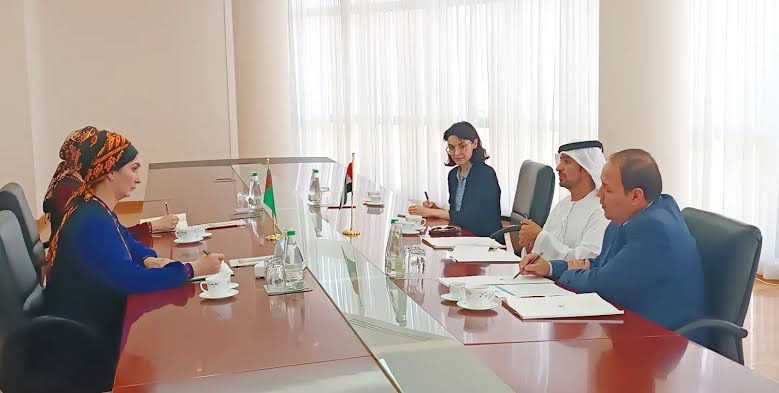
Exploring Transport Options and Shipping Routes
Mapping Major Transport Corridors
Strategic Transport Routes to Turkmenistan
The trade lane between the UAE and Turkmenistan is supported by several key transport corridors. These include:
- International North-South Transport Corridor (INSTC): This significant multimodal corridor spans 7,200 kilometers, linking the UAE with Turkmenistan via Iran and other Central Asian countries.
- Trans-Caspian International Transport Route (TITR): Also known as the “Middle Corridor,” this route connects the UAE and Turkmenistan across the Caspian Sea.
- East-West Corridor: This corridor connects the UAE through Iran and Turkmenistan to the wider Central Asian markets. Its development ensures reliable transport links across challenging terrains.
Strategic Shipping Routes Connecting the UAE and Turkmenistan
Sea Freight Details
The UAE and Turkmenistan share a dynamic trade relationship facilitated by efficient and strategic shipping routes. These routes are essential for the smooth flow of goods, particularly given the significant trade in energy products, machinery, and consumer goods between the two nations.
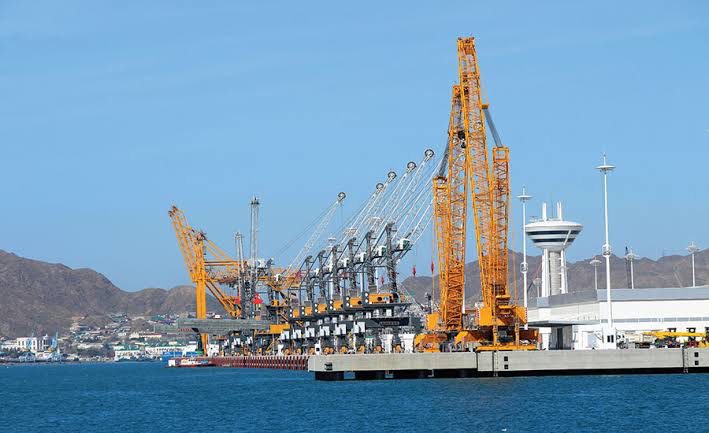
The primary shipping route between the UAE and Turkmenistan involves maritime transport through the Persian Gulf and the Caspian Sea. Goods move from UAE ports, such as Jebel Ali and Khalifa Port, through the Strait of Hormuz into the Persian Gulf, then via overland routes through Iran to the Caspian Sea, finally reaching the Port of Turkmenbashi.
This route offers efficient transit times, typically ranging from 15 to 20 days, depending on the specific cargo Turkmenistan and logistical arrangements.
Air Freight in UAE-Turkmenistan Trade
Air freight services between the UAE and Turkmenistan are integral to the trade relationship, enhancing connectivity and ensuring timely delivery of goods. These services cater to a wide range of cargo, including perishables, pharmaceuticals, electronics, and industrial machinery. The efficiency and reliability of air freight to Turkmenistan support the rapid movement of goods and help businesses meet their supply chain demands.
The typical transit times for air freight between the UAE and Turkmenistan range from 2 to 4 days, depending on the specific service and route chosen.
Major Ports in UAE-Turkmenistan Trade Lane
- Jebel Ali Port: Located in Dubai, Jebel Ali is one of the largest and busiest container ports globally. It features 67 berths and advanced cargo-handling facilities.
- Khalifa Port: This Abu Dhabi port is renowned for its state-of-the-art facilities and connectivity to over 70 international ports.
- Zayed Port: Also in Abu Dhabi, Zayed Port primarily handles bulk and break-bulk cargo, contributing to the diversified trade activities between the two countries.
- Port Rashid: Located in Dubai, Port Rashid has been redeveloped to meet the growing demand for container shipping.
- Port of Turkmenbashi: Situated on the Caspian Sea, this port is Turkmenistan’s primary maritime gateway.
Key Airports and Airlines
Key airports facilitating air freight between the UAE and Turkmenistan include Dubai International Airport (DXB) and Zayed International Airport (AUH) in the UAE, and Ashgabat International Airport (ASB) in Turkmenistan.
Dubai International Airport, in particular, handles significant cargo volumes through airlines such as Emirates SkyCargo, Etihad Cargo, and FlyDubai.
Turkmenistan Airlines, the national carrier of Turkmenistan, operates flights between Ashgabat and various destinations in the UAE. The strategic use of Tashkent Airport in Uzbekistan as a transshipment hub also allows for effective cross-docking and multimodal transport solutions.
Key Customs Procedures and Regulatory Guidelines
A Guide to Turkmenistan’s Customs Rules
Key Export Paperwork and Requirements
Turkmenistan has specific customs regulations designed to control and monitor the import and export of goods to and from the country. These regulations are governed by the Customs Code of Turkmenistan, which includes provisions for import duties, export controls, and various compliance requirements.
For goods exported from Turkmenistan to the UAE, exporters must provide the following documents:
- Export Declaration: A formal statement declaring the goods being exported.
- Commercial Invoice: Detailed invoice showing the value, quantity, and description of the goods.
- Packing List: A list detailing the packaging of the shipment.
- Certificate of Origin: A document certifying the origin of the goods.
- Export License: For specific controlled items, an export license may be required.
Import Regulations in Turkmenistan
Shipping from Dubai to Turkmenistan is subject to various import regulations, tariffs, and taxes. The country imposes import duties that vary depending on the type and value of the goods.
Additionally, there are excise taxes on specific categories of products, such as alcohol and tobacco. Importers must also ensure that their goods comply with Turkmen health and safety standards. The recent legislative updates emphasize using electronic documentation to facilitate faster processing and clearance of imports.
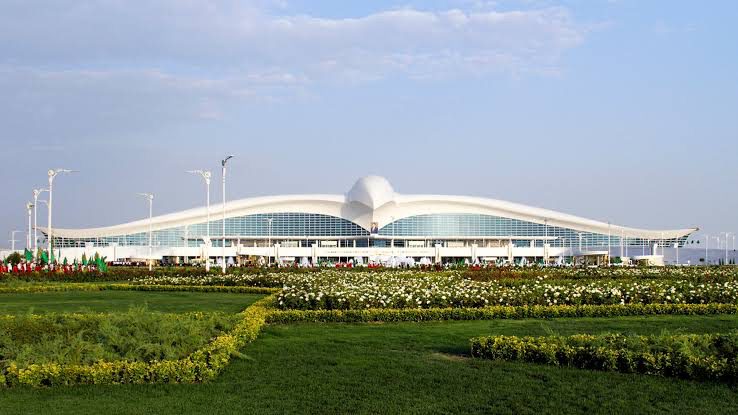
Import Documentation and Requirements
Importing goods into Turkmenistan requires the following documents:
- Import Declaration: A comprehensive declaration form submitted to customs authorities.
- Commercial Invoice: An invoice detailing the value, quantity, and description of the goods.
- Packing List: An itemized list of the goods being imported.
- Bill of Lading or Airway Bill: Transport document showing the details of the shipment.
- Certificate of Conformity: Certification that the goods meet Turkmenistan’s quality and safety standards.
Navigating UAE Customs Regulations
Documentation Required for Export
Exporting goods from the UAE requires several key documents to ensure compliance with customs regulations:
- Export Declaration: Indicates the nature, quantity, and value of the goods being exported.
- Commercial Invoice: Provides details about the transaction, including the buyer, seller, price, and terms of sale.
- Packing List: Itemizes the contents of each package within the shipment.
- Certificate of Origin: Certifies the origin of the goods, which can affect applicable tariffs.
- Export License: Required for specific controlled goods, ensuring they meet all regulatory requirements.
UAE Export Regulations
The UAE’s export regulations facilitate trade while ensuring security and compliance with international standards. All exports must comply with the GCC Common Customs Law, and certain goods may require additional permits or licenses.
The UAE has strict controls on the export of goods such as firearms, narcotics, and items that could be used for military purposes. Exporters must also ensure that their shipments comply with the Harmonized System (HS) codes and other classification requirements.
UAE Export Regulations
The UAE’s export regulations facilitate trade while ensuring security and compliance with international standards. All exports must comply with the GCC Common Customs Law, and certain goods may require additional permits or licenses.
The UAE has strict controls on the export of goods such as firearms, narcotics, and items that could be used for military purposes. Exporters must also ensure that their shipments comply with the Harmonized System (HS) codes and other classification requirements.
UAE Import Regulations
The UAE’s export regulations facilitate trade while ensuring security and compliance with international standards. All exports must comply with the GCC Common Customs Law, and certain goods may require additional permits or licenses.
The UAE has strict controls on the export of goods such as firearms, narcotics, and items that could be used for military purposes. Exporters must also ensure that their shipments comply with the Harmonized System (HS) codes and other classification requirements.
Import Documentation and Requirements
To import goods into the UAE, the following documents are typically required:
- Import Declaration: A formal declaration detailing the nature, quantity, and value of the goods.
- Commercial Invoice: An invoice detailing the transaction, including the buyer, seller, and terms of sale.
- Packing List: Detailed list of the contents of each package in the shipment.
- Bill of Lading or Airway Bill: Transport document outlining the shipment details.
- Certificate of Conformity: Certification that the goods meet UAE’s standards and regulations.
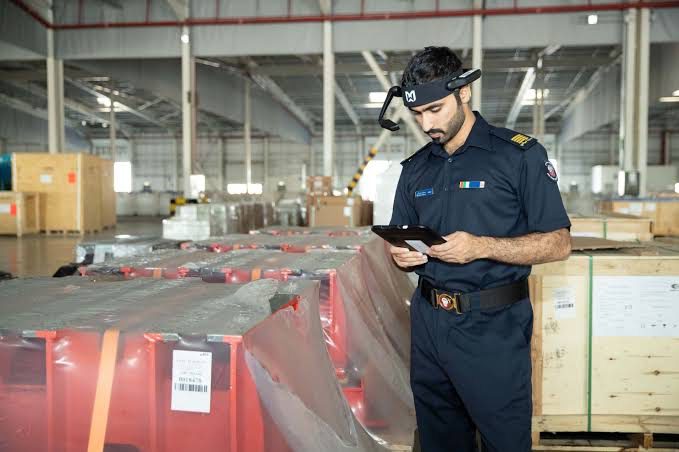
Navigating Trade Opportunities and Barriers
Identifying New Trade Markets
Key Industries with Growth Potential
Trade between the UAE and Turkmenistan has grown significantly, with a notable increase in non-oil trade. In 2023, the trade turnover between the two countries surged by almost 300%. The various sectors delivering this growth include:
- Energy: The UAE has been actively investing in Turkmenistan’s vast natural gas reserves, through companies like ADNOC, Dragon Oil, and Masdar.
- Infrastructure and Construction: The UAE’s expertise in infrastructure development can support Turkmenistan’s modernization efforts.
- Renewable Energy: Both countries are investing in renewable energy projects via their resources and technological advancements.
Bilateral Trade Growth Through Strategic Agreements
Trade agreements and Memoranda of Understanding (MoUs) between the UAE and Turkmenistan smoothen trade processes, reduce tariffs, and open new avenues for cooperation.
Notable agreements include those signed during various high-level meetings and forums, such as the Trade, Investment, and Business Opportunities in Turkmenistan forum scheduled for November 2024. These agreements cover sectors like energy, infrastructure, and renewable energy.
New Opportunities in UAE-Turkmenistan Emerging Markets
Emerging markets in Turkmenistan include renewable energy, telecommunications, and agriculture, that are witnessing increased foreign investment and technological upgrades. In the UAE, the tourism and hospitality sectors continue to grow, driven by aggressive marketing and infrastructure development.
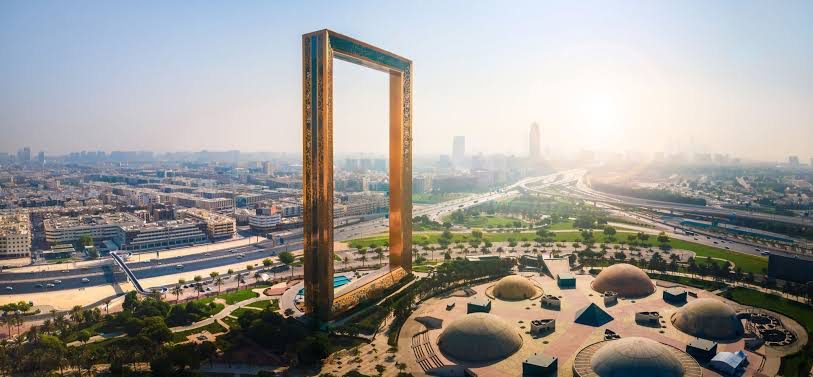
Overcoming Common Trade Barriers
Language and Cultural Barriers
While both nations have established diplomatic and business relations, the differences in language and business etiquette can lead to misunderstandings and inefficiencies.
The UAE primarily operates in Arabic and English, whereas Turkmenistan uses Turkmen, creating a need for effective translation services and cultural training to bridge the gap and smoothen business interactions.
Political Instability
The geopolitical landscape of Central Asia, including Turkmenistan, is influenced by the interests of major powers such as Russia, China, and the United States. The rivalry among these global players can lead to political instability, which impacts sustained cargo service to Turkmenistan.
Additionally, regional conflicts and internal political dynamics can disrupt trade routes and economic activities, affecting the reliability and security of investments. Businesses must navigate these complexities carefully, maintaining awareness of the evolving political climate to mitigate risks.
Infrastructure Challenges
Despite ongoing efforts to improve transport and logistics networks, including road, rail, and port facilities, gaps remain that can impede efficient trade. For instance, the Port of Turkmenbashi requires further development to handle increased cargo to Turkmenistan. Moreover, the overland routes through neighboring countries often face logistical bottlenecks, adding to transit times and costs. Addressing these infrastructure challenges is essential to enhance the trade lane’s efficiency and reliability.
Value-Driven Logistics and Freight Services by Al Sharqi for UAE-Turkmenistan
Al Sharqi Shipping provides extensive freight forwarding services covering both ocean/sea and air freight. For businesses operating in the UAE-Turkmenistan trade lane, we offer strategic planning and organization for shipping from UAE to Turkmenistan.
Our ocean freight services include booking cargo space on preferred carriers, handling necessary documentation, and complying with international import/export regulations. Our air freight services are equally robust, offering expedited shipping options, comprehensive cargo handling, and door-to-door delivery solutions.
Customized Freight Services for Turkmenistan Deliveries
When shipping from Dubai to Turkmenistan, Al Sharqi provides specialized services to cater to the specific needs of this trade route. Their offerings include customized solutions for various types of cargo, ensuring safe and timely delivery.
One of our standout services is the Air Cargo Charter Service to Turkmenistan, which provides dedicated air freight options for urgent or high-value shipments. This service guarantees faster transit times and greater flexibility, making it ideal for businesses requiring prompt and reliable delivery of goods.
Experience unparalleled efficiency and reliability with Al Sharqi’s logistics services in the UAE-Turkmenistan trade lane.
Whether you need comprehensive freight forwarding services for Turkmenistan or specialized cargo solutions, our expert team ensures your shipments arrive safely and on time.
With over 30 years of industry expertise, Al Sharqi is your trusted partner for seamless cross-border trade. Contact us today and transform your UAE logistics experience with Al Sharqi!
Conclusion
The UAE-Turkmenistan trade lane has seen remarkable growth, driven by strategic investments, robust infrastructure, and strong bilateral relations. Key sectors such as energy, logistics, and construction are thriving, supported by comprehensive freight and customs solutions.
The UAE’s focus on expanding its non-oil economy and Turkmenistan’s rich natural resources will likely enhance trade volumes and economic cooperation in the coming years. By capitalizing on these opportunities, businesses can benefit from the dynamic trade landscape, fostering sustainable growth and development for both the UAE and Turkmenistan.
FAQ's
The UAE primarily exports machinery, electronics, and construction materials to Turkmenistan.
The UAE-Turkmenistan trade relationship has seen significant growth of about 296% increase in trade turnover in recent years, reflecting deepening economic ties and mutual investments in energy and infrastructure.
Major challenges include geopolitical tensions, infrastructure limitations in Turkmenistan, and cultural and language barriers that can affect business communication and operations.
Turkmenistan offers substantial investment opportunities in its energy sector, particularly in natural gas and oil, infrastructure development and agriculture.
Al Sharqi provides comprehensive logistics services, including ocean and air freight, customs brokerage, and specialized cargo solutions, ensuring efficient and reliable transportation of goods between the UAE and Turkmenistan.
Related Articles
In-Depth Guide to UAE-Armenia Trade Relations
Introduction The trade relationship between the UAE and Armenia has seen substantial growth in recen
Essential Insights into the UAE-Turkmenistan Trade Lane
Introduction The trade relationship between the UAE and Turkmenistan is increasingly becoming a corn
Navigating the UAE-Tajikistan Trade Route – A Complete Guide
Introduction Over the years, the bilateral trade between the UAE and Tajikistan has shown remarkable




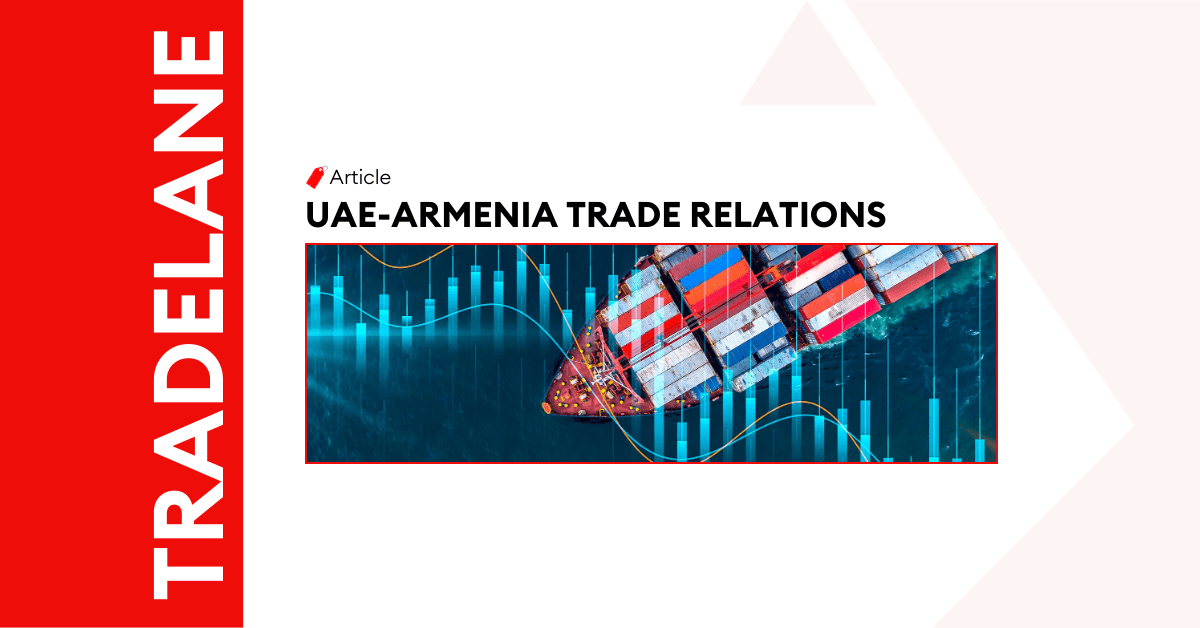
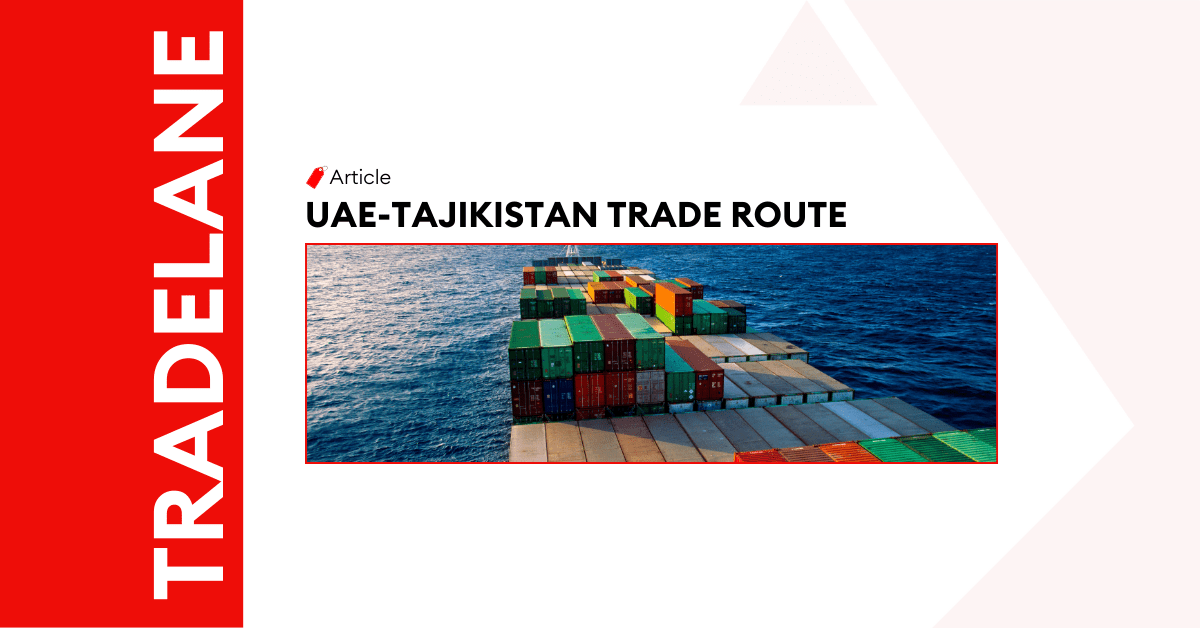
Post a comment
You must be logged in to post a comment.